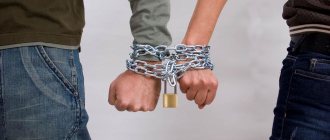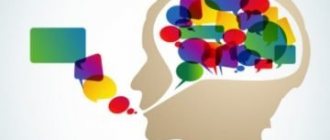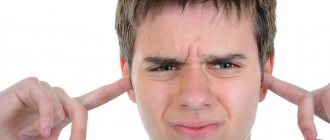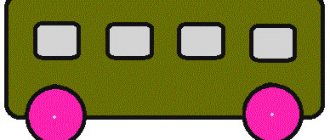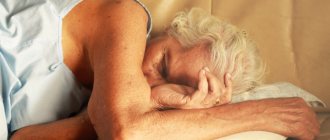Principles of treatment of cerebral palsy
Treatment of cerebral palsy is carried out in several directions. Firstly, it is necessary to correct speech defects as much as possible. Secondly, motor skills should be corrected and improved. Thirdly, it is necessary to carry out work designed to correct existing mental disorders. To eliminate movement disorders, it is important to form a muscle stereotype, reinforce correct postures, etc. It is imperative to carry out treatment aimed at eliminating the underlying disease that caused the development of cerebral palsy.
The following methods are actively used in the treatment of the disease:
- Massage.
- Physiotherapy.
- Drug treatment with drugs designed to normalize muscle tone. These may be medications such as: Baclofen, Dysport, Mydocalm and others.
The following techniques and techniques are no less actively used in medical practice:
- Bobath therapy.
- Voight's method.
- Pneumatic suit "Atlant". It helps stretch muscles, fix joints and send a “corrected” signal to the brain. As a result, the limbs begin to move correctly.
- The “Spiral” suit, which stimulates the body’s compensatory capabilities. Its use helps reduce muscle spasticity and acquire new motor skills.
- Suits that give load (“Gravistat”, “Adele”).
- Classes with a speech therapist using certain methods.
- Use of therapeutic exercise equipment, walkers, bicycles, chairs, etc.
Sometimes existing motor defects cannot be corrected using conservative and auxiliary techniques. In this case, doctors resort to surgical treatment. Surgeries are performed to remove muscle contractures, interventions in the lumbar region, and tendon plastic surgery (achilloplasty) is practiced. It is possible that neurosurgical treatment with stimulation of the spinal cord, removal of damaged areas, etc. may be required.
Very often, horses, dolphins and other animals are involved in the treatment of patients with cerebral palsy. In general, such techniques are called animal-assisted therapy. At the same time, children are sent to specialized sanatoriums, where they have a complex effect on the body.
Russian doctors often treat cerebral palsy with drugs aimed at improving cerebral circulation. These are drugs such as: Glycine, Actovegin, Cerebrolysin, etc. Dietary supplements and antioxidants are also used in complex therapy. Doctors are armed with stem cells. However, these drugs have no proven effectiveness in the treatment of cerebral palsy.
Parents should know the following information:
- Anticonvulsant drugs are prescribed only by an epileptologist. The dosage must be strictly defined, and there must be indications for taking such medications. The drugs Valproic acid, Topiramate, Lamotrigine can be used.
- To eliminate severe muscle pain, it is possible to prescribe drugs such as: Baclofen and Diazepam. Their independent use is not permissible.
- In especially severe cases, Botox injections are prescribed, when the drug is injected into the affected muscle. It is worth understanding that the effect of such treatment is temporary and lasts for 6 months, but no more.
As for other medications that doctors very often prescribe, they are nothing more than dummies. If the lesion in the brain has already died, it cannot be restored. Therefore, you should not offer your child an abundance of dietary supplements, vitamins, or nootropic drugs. As stated, their effectiveness has not been proven.
Such means include:
- Cerebrolysin, Actovegin, Cortexin.
- Cavinton, Cinnarizin.
- Piracetam, Phenibut, Pantogam and other nootropics.
- All homeopathic remedies.
The sooner therapy is started, the greater the effect can be achieved. If treatment is delayed, this risks the development of serious complications and deterioration of the child’s condition. It is possible to develop a curvature of the spinal column, flat feet, hip dysplasia, etc. As a result, the treatment of cerebral palsy is complicated by the need to take measures aimed at eliminating acquired orthopedic pathologies. Often in such cases it is necessary to apply splints, use spacers, splints and other corrective devices. If dysplasia is not recognized and eliminated in time, this can lead to permanent joint dislocations, which can only be corrected through surgery.
Causes
According to modern concepts, cerebral palsy occurs as a result of the influence of various damaging factors on the child’s central nervous system, causing abnormal development or death of certain parts of the brain. Moreover, the action of these factors occurs in the perinatal period, i.e. before, during and immediately after the birth of the child (the first 4 weeks of life). The main pathogenetic link in the formation of cerebral palsy is hypoxia, the development of which is caused by various causative factors of cerebral palsy. First of all, during hypoxia, those areas of the brain that are responsible for maintaining balance and providing motor reflex mechanisms are affected. As a result, muscle tone disorders, paresis and paralysis, and pathological motor acts typical for cerebral palsy occur.
The etiological factor of cerebral palsy, operating during the period of intrauterine development, is various pathologies of pregnancy: fetoplacental insufficiency, premature placental abruption, toxicosis, nephropathy of pregnant women, infections (cytomegalovirus, rubella, toxoplasmosis, herpes, syphilis), Rh conflict, threat of miscarriage. Somatic diseases of the mother (diabetes mellitus, hypothyroidism, congenital and acquired heart defects, arterial hypertension) and injuries suffered by a woman during pregnancy can also cause the development of cerebral palsy.
Risk factors for the development of cerebral palsy that affect the child during childbirth include: breech presentation of the fetus, rapid labor, premature birth, narrow pelvis, large fetus, excessively strong labor, prolonged labor, discoordinated labor, long anhydrous period before birth. Only in some cases is birth trauma the only cause of cerebral palsy. Often, difficult childbirth, leading to the occurrence of cerebral palsy, becomes a consequence of an existing intrauterine pathology.
The main risk factors for the occurrence of cerebral palsy in the postpartum period are asphyxia and hemolytic disease of the newborn. Asphyxia of a newborn leading to cerebral palsy can be associated with aspiration of amniotic fluid, various malformations of the lungs, and pregnancy pathologies. A more common postpartum cause of cerebral palsy is toxic brain damage due to hemolytic disease, which develops as a result of blood incompatibility or immunological conflict between the fetus and mother.
The formation of cerebral palsy is based on a hypoxic process, leading to disruption of the functioning of cells of the central nervous system. The human brain is one of the most sensitive structures to insufficient oxygen content in the blood serum. As a result of prolonged mild hypoxia or an acute short-term lack of oxygen, damage to the cortex and vital structures occurs. The causes leading to hypoxia are:
- Infectious process in the placenta and the fetus. The infection can enter through the mother's blood or from the cervix. The most common pathogens are any of the sexually transmitted infections; opportunistic flora are less commonly identified. The risk group includes women with inflammatory processes in the vagina, as well as pathologies of the urinary system.
- Intrauterine disruption of the formation of the cerebral cortex. Changes in the formation of the nervous system occur as a result of placental insufficiency, late toxicosis, and severe maternal anemia. Birth trauma. During the birth process, you can encounter the development of hypoxia with an increase in its duration, weakness of the pushing period, the formation of a clinically narrow pelvis, and the use of a vacuum extractor or obstetric forceps.
- Pathology on the mother's side. In this case, the most common pathologies are anemia, diabetes, and arterial hypertension.
- Fetal complications caused by Rhesus conflict. This may be long-term persistent jaundice with encephalopathy.
- Fetal intoxication, which can be caused by maternal alcohol or tobacco abuse, as well as drug use.
- Prematurity of the child. Premature birth is a powerful stressor on the fetus; cortical cells may not be sufficiently formed; in addition, a high probability of obstetric trauma is a pathogenic factor.
These options are relevant for the congenital variant of cerebral palsy. Acquired forms develop after an infection, accompanied by inflammation of the brain.
Objectives of treating children with cerebral palsy
It is impossible to completely get rid of cerebral palsy, however, it is quite possible to achieve significant success in the development of a child. With proper management of the patient, it is possible to hone self-care and motor skills. This will make the child less dependent on the help of other people in the future.
Therefore, doctors and parents treating a child with cerebral palsy face the following tasks:
- Do your best to stimulate the child’s desire for self-care. Encourage him to perform the correct movements and actions.
- Prevent the formation of curvature of the spinal column, contractures and the consolidation of incorrect posture skills.
- Create an environment that stimulates the development of speech and psycho-emotional sphere.
To solve the assigned problems, the child’s age, the form of cerebral palsy, the severity of the disease, the level of mental development, and the presence of concomitant pathologies must be taken into account.
Precise timing
And yet, despite treatment, some children with cerebral palsy still have severe movement disorders. A feature of this disease is that the muscles are sharply tense. And, if this situation persists for years, tense muscles gradually tighten, deform and immobilize the joints to which they are attached. This is when the need for surgical intervention arises. The surgeon’s task is to free the joints and restore their freedom of movement. To do this, the muscles are dissected, lengthened and transplanted, and the nerves entering them are crossed.
The best time for such operations is 5-10 years, when the formation of the musculoskeletal system is completed.
Basic rules for working with children with cerebral palsy
Working with children with cerebral palsy involves close interaction between the child and not only the doctor (neurologist, physiotherapist, physical therapist, surgeon), but also with the teacher, speech therapist, and psychologist. It needs to start from an early age. Classes with children 1-3 years old involve teaching them self-care skills, speech development, motor skills, and learning how to interact with other children.
It is very important to teach a sick child to communicate with peers, to form stereotypes in them, designed to facilitate socialization. At the same time, an individual approach must be present on an ongoing basis. The priority form of conducting classes is a game, but it must be led by an adult, competently correcting the child’s actions. The teacher should encourage correct movements and correct pathological postures.
When working with children with cerebral palsy, instruments and devices should be used aimed at maintaining and fixing correct postures, the position of arms and legs, head and torso. This is the only way to achieve the development and consolidation of articulatory skills and to correct visual movements in response to changes in the environment.
Pain
Issues related to the presence of pain often go unnoticed by medical professionals due to the fact that patients with cerebral palsy cannot describe the degree of pain and its location. The pain can be acute or chronic and is most often localized in the hips, knees, ankles, lower or upper back.
The best treatment for pain associated with musculoskeletal disorders in cerebral palsy is prevention: correcting skeletal muscles and disorders at an early age avoids the progressive accumulation of tension that causes pain. Chronic hip dislocation, which especially often causes pain, can be eliminated through timely surgical intervention.
Therapeutic exercise and massage
Children with cerebral palsy are referred for massage at the age of 1.5 months and older. The classic massage scheme gives a good effect. However, you should not give up segmental, acupressure, cryomassage or massage according to Manakov’s method. It is important that all manipulations are carried out by a specialist who individually selects the massage technique and the frequency of sessions. Doctors categorically do not recommend that parents massage their child with cerebral palsy on their own.
As for physical therapy complexes, they should be implemented on an ongoing basis. The selection of exercises depends on the child’s health status and the individual characteristics of his development. No less important is the principle of dosing physical activity and its gradual increase.
The following exercises are recommended for children with cerebral palsy:
- Stretching;
- Walking on an inclined surface, which helps train balance;
- Establishing the correct walking to develop the correct muscle stereotype;
- Relaxation of muscles, reduction of increased tone;
- Increased range of motion;
- Expanding range of motion;
- Increased muscle strength.
Massage and exercise therapy according to D. Sandakov:
Features of the disease
Can cerebral palsy be cured? Most often this question is asked by parents of sick children. And this is not surprising. After all, such a disease requires enormous endurance, strength and patience from parents.
Experts say that with cerebral palsy, children can experience a variety of motor disorders. Muscle structures are most severely affected. In this regard, children may experience:
- muscle tension and spastic contraction;
- various movements of an involuntary nature;
- limited mobility;
- gait disturbances.
Possible treatment methods for cerebral palsy
In the treatment of children with cerebral palsy, various techniques are used to help combat the progression of the disease, including:
- Balneotherapy
. This technique involves performing special exercises in an aquatic environment. In water, body weight decreases, which allows the child to perform various movements more easily. It's good to train your walking skills in the pool. Often children with cerebral palsy first learn to swim and only then walk. It’s good when exercise in the pool is supported by hydromassage, taking pine, iodine-bromine, valerian, radon, and turpentine baths. Underwater massage is best implemented in modern baths such as “Aquapedis”, “Aquamanus”, in which the therapeutic effect is complemented by ozonation and chromo-color therapy. Galvanic baths "Verishofen" allow you to influence the body not only with warm water, but also with currents (pulsed or galvanic), as well as medicinal substances (turpentine, bischofite, nicotinic acid, pine extract, etc.).
- The climatic
quantum chamber allows you
to influence the body with a laser shower. - Mud therapy.
This technique helps improve the condition of the patient’s nervous system. With the help of warm wraps, it is possible to reduce increased muscle tone.
- Electrophoresis
. This technique is aimed at reducing muscle tone. In general, all physiotherapeutic treatment methods have a positive effect in the fight against the disease. Therefore, doctors recommend periodically undergoing sessions of paraffin therapy, shiatsu therapy, acupuncture, light therapy, and magnetic therapy.
- Kinesio taping
in pediatrics.
The essence of the method is special adhesive cotton tapes, which are activated by body heat, applied in the form of applications along muscle lines to fix affected joints, muscles, tendons, reduce pain and inflammation, and relax tired muscles. Unlike tight fixation with a cast, kinesio taping treats such injuries through movement. The method does not interfere with movement and allows you to continue your daily activities as usual. You can take a shower, go to the pool, and people with mobility impairments can take care of themselves at home. Initially, this method was used for the rehabilitation of professional athletes, but then the method found application not only in the field of sports and is currently used for a wide range of treatments - from headaches to post-traumatic rehabilitation. - It is very useful to develop correct walking skills to practice on a treadmill in front of a mirror.
There are also special bicycles for children with cerebral palsy, classes on which stimulate the formation of correct skills in the movements of the lower extremities.
- Trampoline exercises
allows you to train the vestibular apparatus.
- Classes with a speech therapist
are included in the mandatory treatment program for children with cerebral palsy. Thanks to such “lessons,” it is possible to teach a child to speak, which prevents the progression of mental retardation, but promotes socialization. There are specialized speech therapy massage courses, which are supplemented with drug treatment.
All methods should be implemented cyclically, repeating 2-3 times a year. One course can include up to 40 lessons.
Of course, the appearance of a child diagnosed with cerebral palsy in a family is a shock for parents. However, loving your baby will allow you to overcome all existing difficulties. It is possible that you will need the help of a family psychologist, which you should not refuse. This will allow you to find harmony and accept the current situation, which will definitely have a positive impact on family relationships.
How is the diagnosis carried out?
The effectiveness of treatment is directly proportional to the time of diagnosis. Therefore, it is important to examine the baby while still in the maternity ward. Increased attention to children at risk:
- Born premature.
- Children with low weight.
- Children with congenital pathologies and defects.
- Infected from the mother during fetal development.
- If a vacuum extractor or forceps was used during delivery.
- Children who are on mechanical ventilation.
- Children with minimal Apgar scores.
- Children who have had jaundice.
The doctor must examine all children at risk in detail and identify muscle tone and reflex reactions. If there is a suspicion of damage to a part of the brain, the child is sent for special examinations:
After confirming the severity of the pathology, the doctor determines the necessary instructions for the child, which will help restore motor functions, as well as avoid complicating consequences.
Video - Teaching parents to restore muscle movement
Glad to see you again, my dears! Today I want to raise a difficult topic. Mainly, it will be difficult and painful for those in whose family a “special” child is growing up. I'm talking about children with cerebral palsy. This disease affects children more and more often and sometimes amazes with its cruelty towards them. Unfortunately, sometimes parents abandon such children while still in the orphanage, knowing that they will be doomed to lifelong torment with a “defective” child who will always need help and support, as well as treatment.
Fortunately, such parents are a minority; the majority still decide to fight the diagnosis-sentence, treat, nurse, and, most importantly, love their child no matter what, believing in the power of parental love as the main and most effective medicine. And, you know, miracles sometimes happen! To the question of whether it is possible to cure cerebral palsy in a child, which many mothers ask, we will try to find the answer today.
We went our own way
Many parents are prejudiced against surgical treatment. They are afraid of the scalpel.
Today such fear has no basis. It was once believed that relapses often occur after operations and problems return again. But surgeons were always looking for correct and effective methods of operating on patients with cerebral palsy and found them. Now the percentage of relapses is insignificant, and there are many successful results. By the way, the development of Russian surgery was helped... by our poverty. If in the West they followed the path of improving technical devices that make the lives of disabled people easier, creating, for example, wheelchairs that can even climb up stairs, at that time we were improving surgical techniques. Today they are more diverse in Russia than in developed countries.
Now there is no pain in surgery; effective anesthesia is used, which does not give any side effects or unpleasant consequences.
Dr. Zhuravlev says: “Some people think: is it really worth going through all the difficulties of the operation just so that a girl who walked ugly can now walk like everyone else? Costs! After all, if a girl can’t get married because she’s limping, that’s a tragedy! The highest reward for a surgeon is when a girl with cerebral palsy can arrange her personal life after his work. This is a brilliant result!”
Rules for proper nutrition
- For such children, special attention should be paid to proper nutrition. In principle, children with this diagnosis can be given everything: fruits, vegetables, fish. It is especially vital to provide such children with milk, and not even cow’s milk, but goat’s milk. Few people know that a cow, just like a person, can suffer from ulcers and indigestion, or gastritis, but a goat never gets sick from anything!
- The juice from spring plants, nettle, rhubarb and birch sap is very useful.
- Legumes have a very beneficial effect on a child’s body: peas, beans, as well as raisins, dried apricots, honey and walnuts. Here is a wonderful mixture that should be given to your child every day on an empty stomach: stir walnuts with 4 tbsp. l. honey
Not every child will be happy to eat this mixture, but it is very healthy. It contains all the substances and amino acids necessary for the brain. For example, honey is a wonderful calming “drug” that the body will never get used to.

